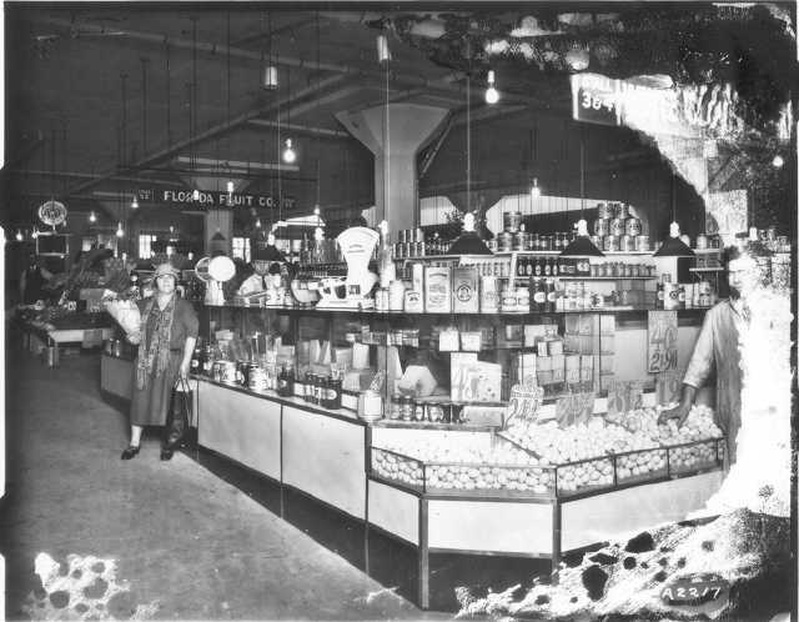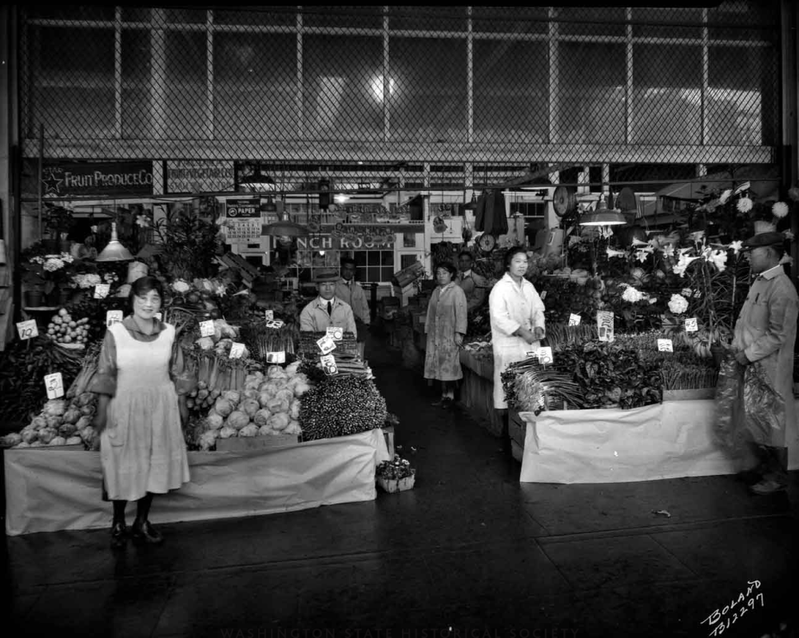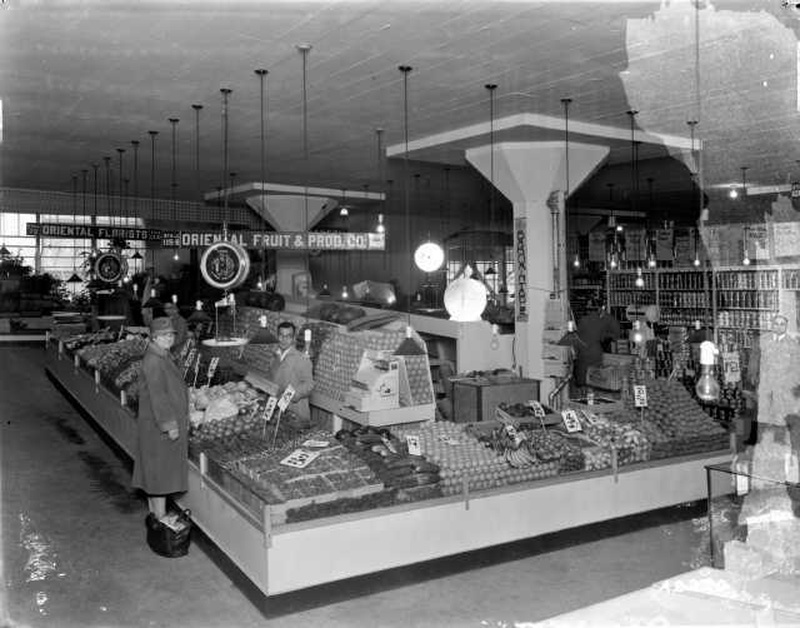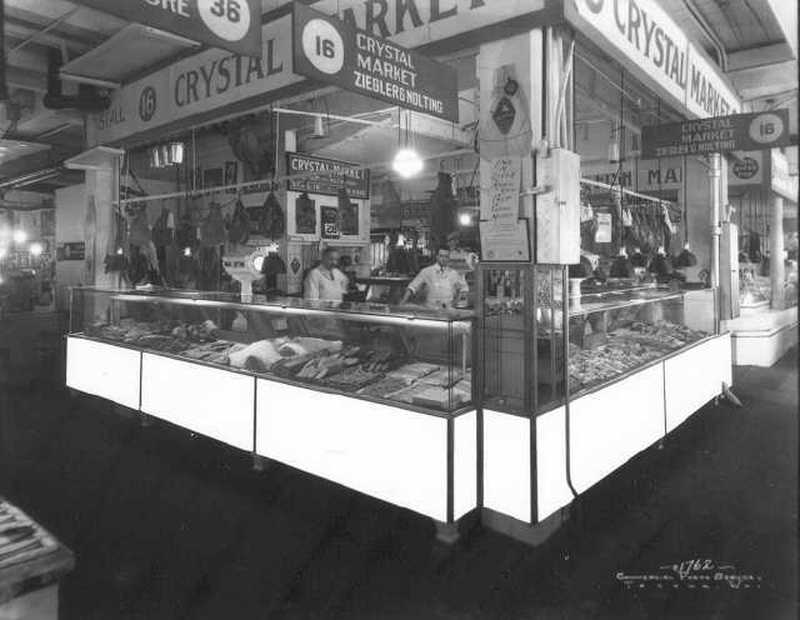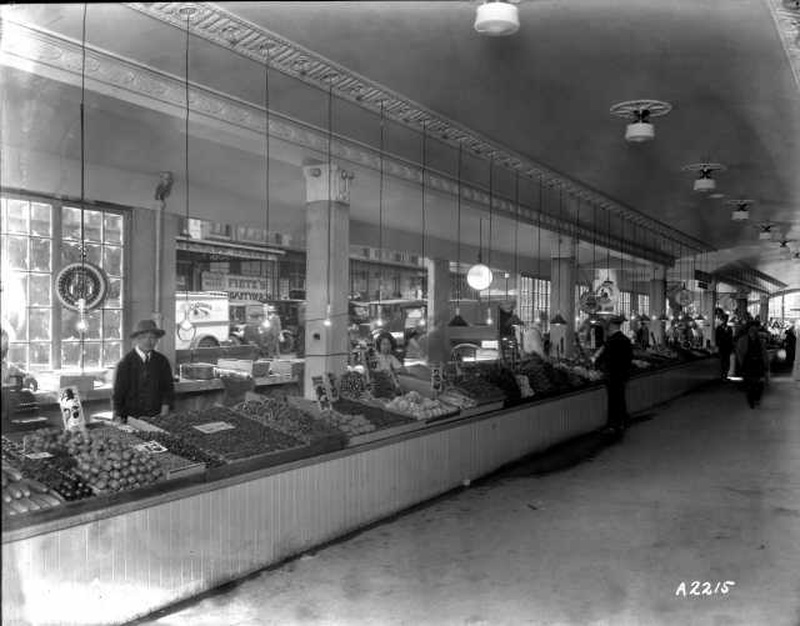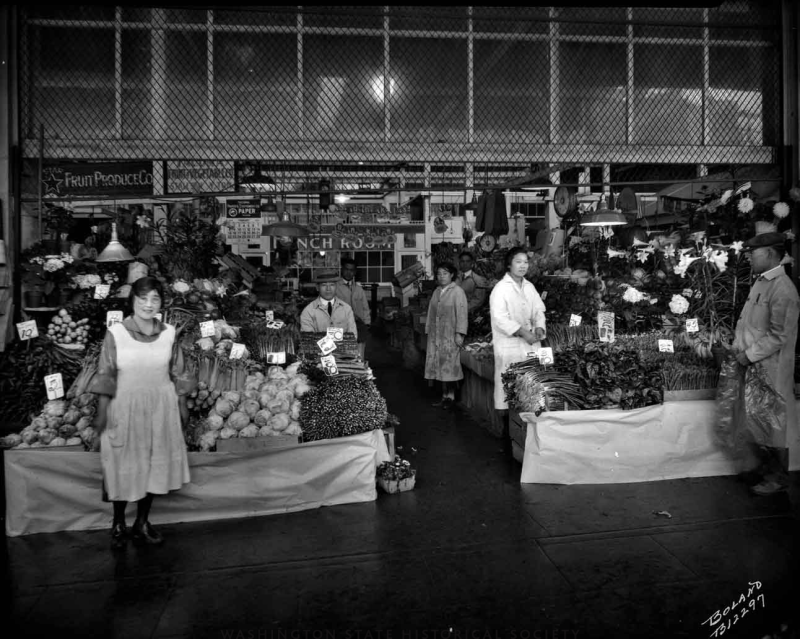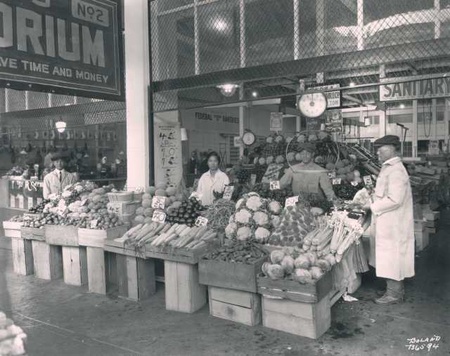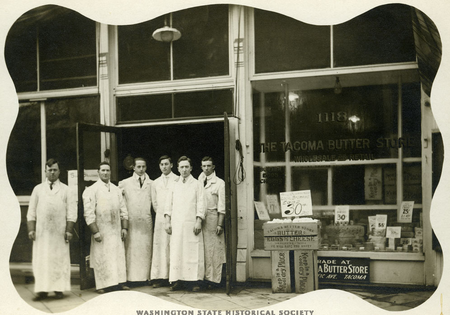The most painful hole in downtown Tacoma has to be at the corners of 11th and Market where once Tacoma public markets filled both sides of the street and the buzz of languages, smells, and small spectacles filled the day between well before dark until evening. Tacoma’s first Public Sanitary Market was designed by the prestigious architect Frederick Heath in 1917 and boasted a delicate white terra cotta facade, tile floors, airy arcades, plumbed and drained stalls and uniformed “sanitary inspectors.” By the early 1920’s it was overfilled with grocers, fish mongers, butchers, bakers, and florists most of which had good American names like Sugimoto, Masouras, Delimitros, and Inouye.
Next to the market on the west side of the street was Anderson’s Butter store that grew into it’s own full dairy products shop fest and together the food enterprises filled the entire half block from 1100 to 1118 Market Street.
In 1926, Charles Hurley paid the astonishing sum of $2 million dollars for a lease on the 20,000 square foot block across the street and in less than a year built the three story fully illuminated Crystal Palace Market. With 180 stalls, a block long arcade of day stalls, neon lights, a bank of loading docks and counters and seats for “lunchers” it was claimed by the manager Arthur Goodwin to be one of the largest and most unique of its kind in the world. Goodwin also manged the Pike Place Market in Seattle so you have to admire his careful, diplomatic choice of superlatives.
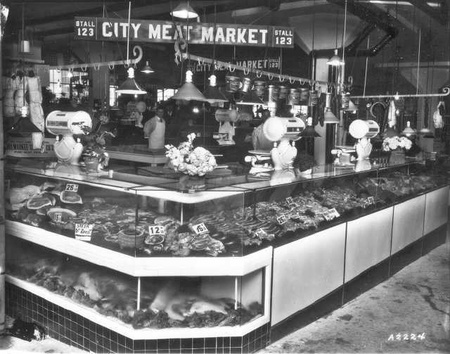
The big corners of the Crystal building were taken by the big players in Tacoma cuisine, Marush Brothers Fish and Oysters, Van De Kamp’s Bakery, and an Italian Delicatessen but the best green grocers in the region, most townie family members of Japanese American farmers in the Fife Valley, stole the show inside.
In spring the flowers began in the day stalls along Market and lasted through harvest time in late autumn. At Christmas time the warmth of the crowds made up for the chilly, breezy open market places as shoppers caught the cable car at 11th and Market after marveling at the window displays at Rhodes and Fisher’s Department Stores just below.
The end of the great Tacoma Markets came abruptly with the start of World War Two and the internment of Tacoma’s Japanese Americans. Rationing during the war, suspicions about Italian’s and other merchants with any accent in their voice cut into the trade as the stalls went empty, the lights were dimmed and gas was unavailable for the deliveries from the docks and farms.
In December 1942, just before Christmas the Tacoma Times reported that the loss of Japanese tenants “breaks” downtown market. In May 1943 the Sanitary market was converted to a 400 bed dormitory for services men and never opened again as a market.
The Crystal did reopen for a mixture of food, drugstores, and shops after being remodeled after the war but when the big department stores moved to the Tacoma Mall in the mid 1960’s it buckled. Suburbs and supermarkets were the coup de grâce. When the desperation of urban renewal hit and parking was sought at any price, the sprawling empty markets were easy targets.
The Crystal Palace Market went first, demolished in August 1973. Shortly there after Frederick Heath’s gracefully arched Public Market building was destroyed. The once delicious destinations have been surface parking lots ever since.
In case you are wondering the foresighted architect Victor Steinbrueck’s campaign to save Pike Place Market in Seattle went to the voters on November 2, 1971 and it was decided to keep the buildings and marketplace activity.
*This article was originally published on Tacoma History on March 20, 2016.
© 2016 Michael Sullivan



